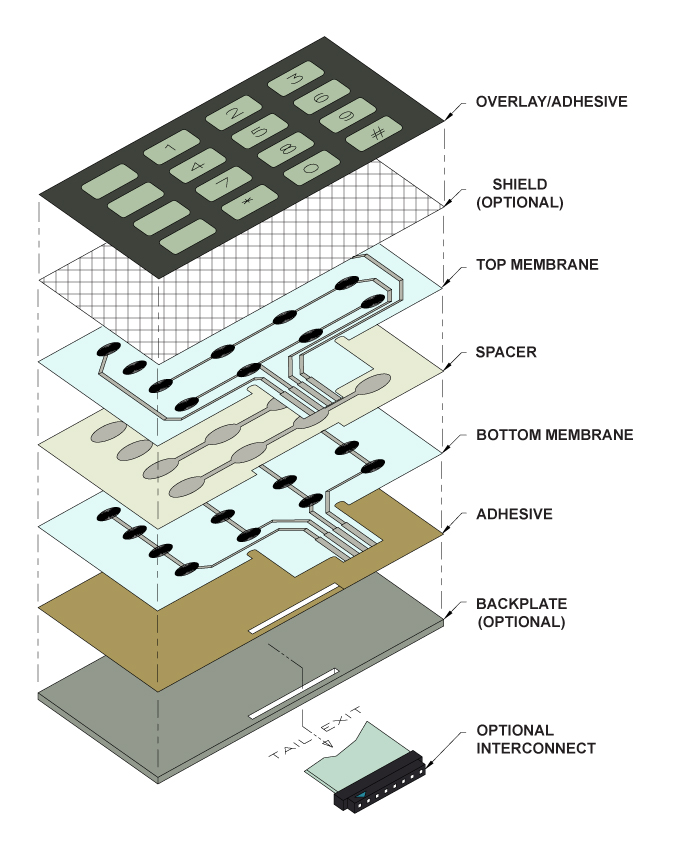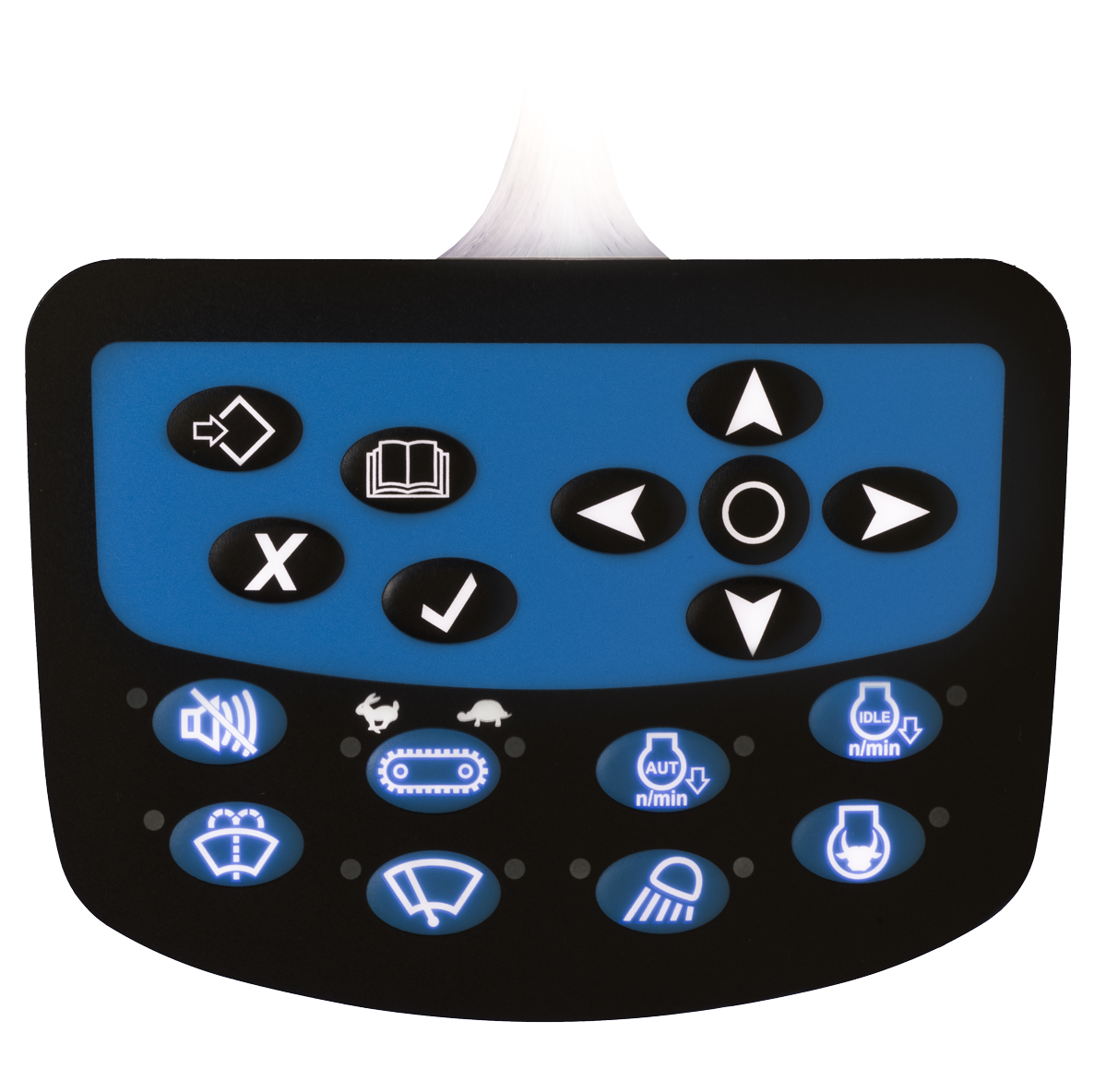All About Membrane Layer Switch: Recognizing Its Design and Capability
When you believe regarding the control user interfaces in contemporary tools, membrane layer buttons often come to mind. Allow's discover what sets membrane changes apart from other control systems.
What Are Membrane Buttons?

Membrane layer switches can additionally be customized relating to form, size, and graphics, allowing makers to produce one-of-a-kind interfaces tailored to certain products. In general, membrane buttons play a significant duty in improving customer experience across a wide array of applications.
How Membrane Layer Switches Work
When you push a secret on a membrane layer switch, it activates an uncomplicated yet efficient mechanism. The top layer, frequently made from versatile product, pushes down onto a conductive layer below it. This activity bridges the space between conductive traces, completing an electric circuit. As soon as the circuit closes, it sends out a signal to the gadget's controller, which analyzes your input.
You'll observe that the tactile comments differs based upon the button design, supplying either a soft click or an extra obvious action. As soon as you launch the key, the membrane returns to its original placement, reopening the circuit and stopping the signal. This process happens practically instantaneously, making sure a responsive user experience.
Membrane layer switches are preferred because of their durability and resistance to dust and wetness, making them perfect for different applications, from home devices to medical gadgets. Comprehending this procedure helps you appreciate their widespread use.
Key Components of Membrane Layer Switches
Understanding the crucial components of membrane switches is basic for realizing their performance and style. The protective layer guards against ecological variables and wear, prolonging the switch's lifespan. By comprehending these elements, you'll get understanding into how membrane layer changes operate and their relevance in various applications.
Products Used in Membrane Switch Over Layout
The performance and toughness of membrane switches over heavily depend on the materials used in their style. You generally run into polyester and polycarbonate as primary substrates as a result of their outstanding toughness and flexibility. These products withstand scratches and chemicals, making them perfect for requiring environments.
The conductive layers typically utilize silver or carbon, picked for their reliability and conductivity. membrane switch manufacturer. Silver offers premium performance, while carbon is an economical alternative. For the overlay, you could think about a matte or glossy surface, depending upon your visual needs and user experience
Adhesives play an essential duty also; they bond layers securely and ensure durability. Make sure to select adhesives that stand up to environmental factors like temperature and humidity. Finally, do not forget the significance of an excellent printing strategy for graphics, as it enhances both performance and aesthetic charm. Picking the appropriate products will certainly guarantee your membrane layer button stands the examination of time.
Style Considerations for Membrane Switches
While designing membrane buttons, it's crucial to take into account numerous aspects that influence their functionality and customer experience. Begin by focusing on the design and switch dimension; make certain they're instinctive and simple to browse.
Verify your style fits environmental elements, like moisture or temperature variations, which might impact performance. By carefully thinking about these aspects, you'll produce a membrane button that improves use and contentment.
Applications of Membrane Layer Switches
Membrane buttons are versatile components found in various applications, from industrial tools to customer electronic devices. You'll see their effect in machines that call for sturdy interfaces and in devices that take advantage of streamlined styles. Understanding these applications aids you value the functionality and practicality of membrane layer switches in everyday modern technology.
Industrial Devices Use
When you're wanting to boost the capability of industrial equipment, membrane layer buttons supply a reliable remedy that integrates toughness with user-friendly layout. These switches are perfect for rough atmospheres, providing resistance to dust, dampness, and chemicals. You'll discover them in control panels for manufacturing equipments, a/c systems, and clinical gadgets, where accuracy and responsiveness are important. Their reduced profile implies they fit perfectly into various tools, saving valuable area while maintaining convenience of use. With adjustable graphics and backlighting choices, you can produce an instinctive user interface for operators, boosting efficiency and safety and security. Plus, their lengthy lifespan minimizes maintenance expenses, making them a clever financial investment for your industrial applications. Accept membrane layer buttons to streamline your procedures and improve general efficiency.
Consumer Electronics Combination
In the domain of customer electronics, membrane switches play a crucial duty in enhancing user communication and tool performance. Membrane layer switches additionally guarantee toughness and resistance to dirt and wetness, expanding the lifespan of your electronic devices. By choosing membrane layer switches, you boost not simply the functionality but also the design of your gadgets, making daily communications smooth and satisfying.
Advantages and Negative Aspects of Membrane Switches
While membrane switches provide a variety of advantages, they additionally feature some downsides that you ought to think about. One considerable benefit is their portable design, making them optimal for space-constrained applications. They're also cost-efficient, providing a durable service with a discover this reduced production price. Furthermore, their seamless surface is easy to tidy, enhancing hygiene in environments like hospitals.

However, there are negative aspects. Membrane layer switches can have a shorter life expectancy compared to mechanical switches, especially under hefty usage. They can also be much less responsive, which could affect individual comments during procedure. If damaged, repairing them can be tough and often requires total replacement. Inevitably, their level of sensitivity to extreme temperature levels and environmental problems may limit their efficiency in certain setups. Balancing these benefits and drawbacks will help you determine if membrane buttons look at this website are the right fit for your project.
Often Asked Questions
For How Long Do Membrane Layer Changes Normally Last?
Membrane changes generally last in between 5 to 10 years, depending on usage and ecological problems. You'll wish to assess factors like wear, exposure to moisture, and temperature fluctuations to gauge their durability effectively.
Can Membrane Switches Over Be Personalized for Details Layouts?
Yes, you can tailor membrane switches to fit specific styles (membrane switch manufacturer). You'll have the liberty to select colors, forms, and formats that match your job's requirements, ensuring they blend seamlessly with your total aesthetic
What Is the Cost Range for Membrane Layer Change Manufacturing?
The price variety for membrane layer button production typically drops in between $1 and $10 each, depending upon aspects like design complexity, quantity, and materials. You can get quotes from makers to discover the most effective choice.

Are Membrane Switches Over Water Resistant or Resistant?
Membrane switches can be made to be waterproof or immune, relying on products used and building approaches. If you need them for wet atmospheres, ensure you specify those requirements during the style procedure.
How Do Membrane Layer Changes Compare to Traditional Buttons?
Membrane layer switches are generally thinner and a lot more flexible than typical basics switches, using a streamlined style. They're frequently easier to clean and incorporate, yet may not supply the tactile feedback you're used to with mechanical choices.
Conclusion

 Tia Carrere Then & Now!
Tia Carrere Then & Now! Alfonso Ribeiro Then & Now!
Alfonso Ribeiro Then & Now! Sydney Simpson Then & Now!
Sydney Simpson Then & Now! Morgan Fairchild Then & Now!
Morgan Fairchild Then & Now! Ricky Schroder Then & Now!
Ricky Schroder Then & Now!